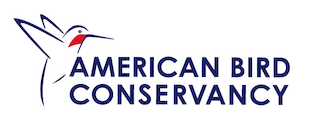New Ireland Friarbird Philemon eichhorni Scientific name definitions
- LC Least Concern
- Names (20)
- Monotypic
Text last updated January 1, 2008
Sign in to see your badges
Species names in all available languages
| Language | Common name |
|---|---|
| Bulgarian | Новоирландски плешив медояд |
| Catalan | frare de Nova Irlanda |
| Croatian | srebrnastopjegi medojed |
| Dutch | Eichhornlederkop |
| English | New Ireland Friarbird |
| English (United States) | New Ireland Friarbird |
| French | Polochion de Nouvelle-Irlande |
| French (Canada) | Polochion de Nouvelle-Irlande |
| German | Neuirland-Lederkopf |
| Japanese | ニューアイルランドハゲミツスイ |
| Norwegian | niuailanmunkefugl |
| Polish | filemon wyspowy |
| Russian | Новоирландский кожеголов |
| Serbian | Gologlavi medojed sa ostrva Nova Irska |
| Slovak | kvetár tombarský |
| Spanish | Filemón de Nueva Irlanda |
| Spanish (Spain) | Filemón de Nueva Irlanda |
| Swedish | newirelandmunkskata |
| Turkish | Yeni İrlanda Keşişkuşu |
| Ukrainian | Медівник новоірландський |
Philemon eichhorni Rothschild & Hartert, 1924
Definitions
- PHILEMON
- philemon
- eichhorni
The Key to Scientific Names
Legend Overview
Field Identification
32 cm; 82–116 g. Large, dark honeyeater with long, rather heavy and decurved bill (with no protuberance at base of upper mandible). Plumage is plain dark brown to blackish-brown above, with silvery white forehead speckled with black, grading into fine silver and dark streaks on crown, supercilium (curving down behind eye) and rear malar area; dark brown nape and rear ear-coverts continuous with narrow dense and hair-like dark brown malar stripe extending from bill; strongly contrasting and prominent collar of silvery grey and slightly upcurled feathers on hindneck, grading into blackish and silvery white mottled side of neck; small blackish bare patch covering lores, area around eye and anterior malar area; tail tipped white, more broadly at outer corners; chin and throat silvery white, finely dark-streaked; underbody pale brown, much paler than upperparts, with greyish-white spotting or scaling (except on belly), undertail brown with greyish-white tip; iris light brown to dark brown; bill black; legs greyish-blue to blue-grey or slate-grey. Sexes alike, male probably larger than female. Juvenile is like adult, but pale edges on some feathers of upperparts giving varyingly scaly appearance, and throat washed with yellow.
Systematics History
Subspecies
Distribution
New Ireland, in N Bismarck Archipelago.
Habitat
Montane forest, from 750 m to at least 2200 m; also said to disappear below 900 m.
Movement
Considered resident.
Diet and Foraging
No information.
Sounds and Vocal Behavior
Typical song a 3-note whistled “pu-du-leet”, each note increasing in pitch. No other information.
Breeding
No information.
Conservation Status
Not globally threatened. Restricted range species: present in New Britain and New Ireland EBA. No estimates of global population; considered common within preferred altitudinal range. Very poorly known species.

- Year-round
- Migration
- Breeding
- Non-Breeding







































